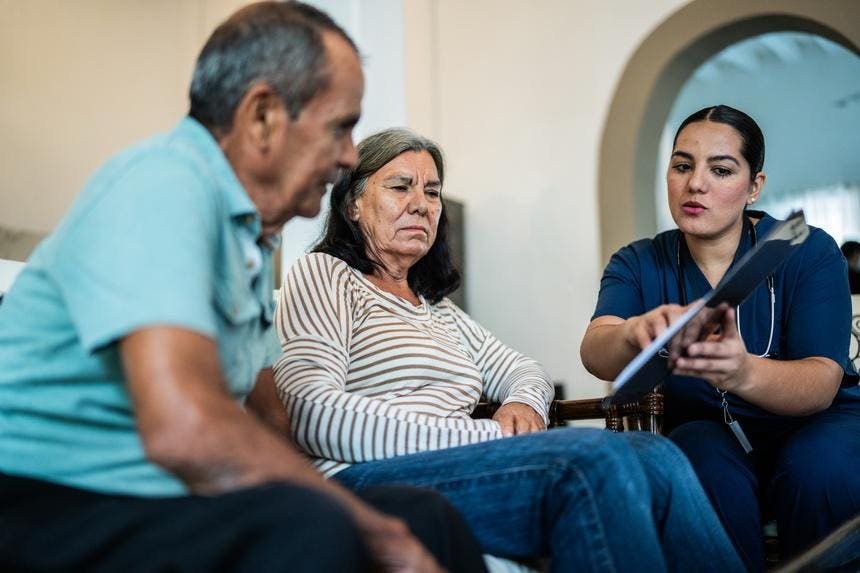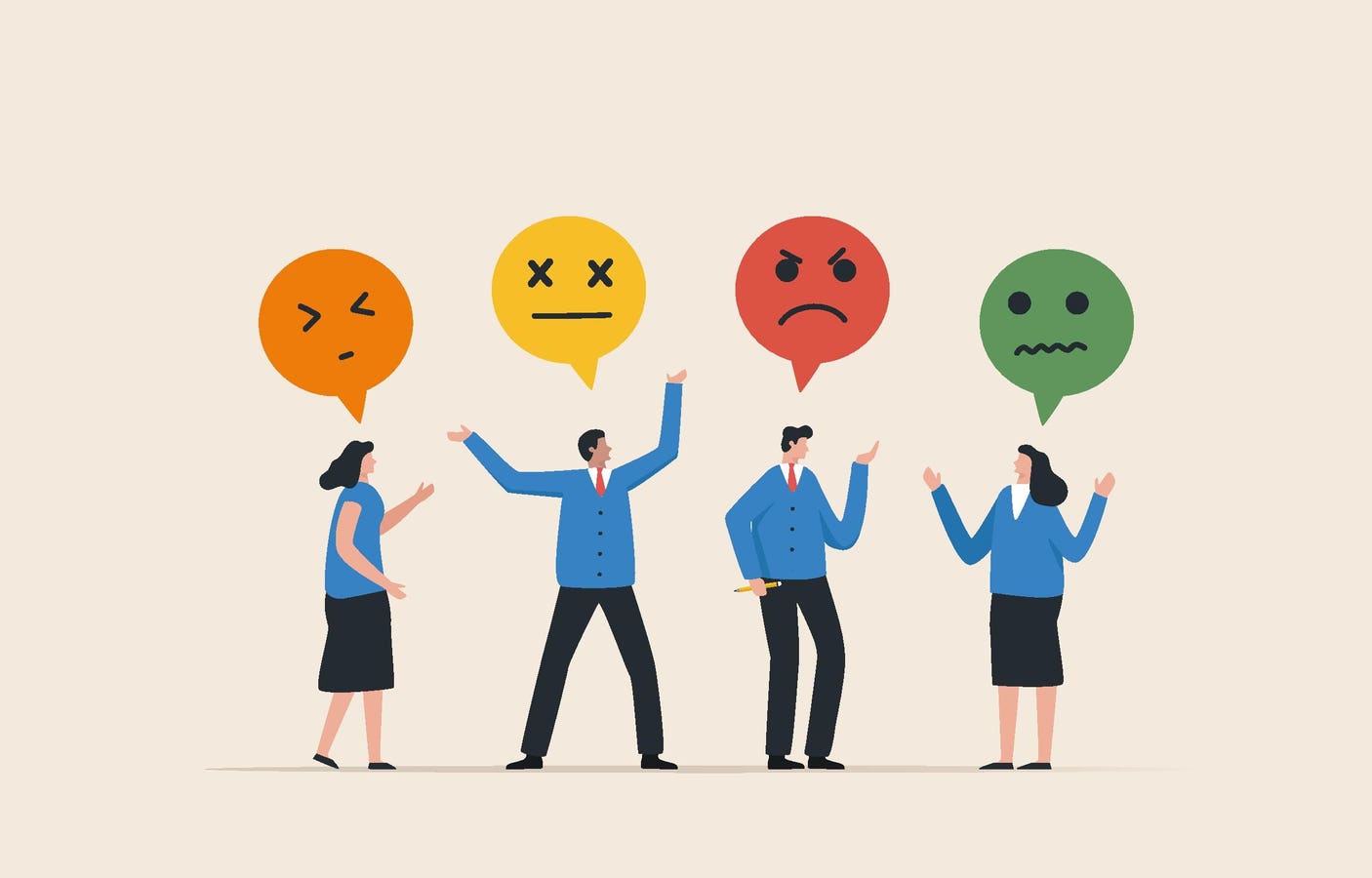The silent strain of spousal or partner caregivers
getty
The first impact was emotional, says Esme Almonte, 58 (name changed). “When a loved one is suffering from a chronic illness, you think in the beginning, if you do things right, everything will be alright—and that’s what I thought.” Almonte is the primary caregiver for her husband, who suffers from leptomeningeal disease. She is among the rising number of spousal or partner caregivers who are women, according to research. She’s also part of the 44% of family caregivers in high-intensity situations, according to Caregiving in the U.S. 2025, a landmark report published by the National Alliance for Caregiving and AARP.
The report provides the most comprehensive snapshot to date of America’s 63 million caregivers and outlines what must be done to support them. High-intensity care is defined as providing longer weekly hours of support, assisting with essential tasks such as bathing, meal prep, managing medications or finances, and often doing so with little or no help.
Spousal or partner caregiving is especially complex because it involves caring for someone deeply loved, often evoking a range of difficult emotions—anger, guilt, confusion, and grief. And that’s just the beginning. These situations are emotionally and physically draining.
For Mark Horst, 63 (name changed), the weight of caregiving became clear when his wife of 38 years was diagnosed with Alzheimer’s. He didn’t know what lay ahead—only that he would remain by her side as her primary caregiver. “Having Alzheimer’s is absolutely heartbreaking, and I couldn’t do it without God’s help,” says Horst, a man of deep faith. Like Almonte, he quickly realized that caring for a loved one with a chronic illness requires deep empathy, patience, and resilience—and help.
According to the Caregiving in the U.S. 2025 report, caregivers who provide high-intensity care devote more time and assist with more tasks than other caregivers. They not only navigate unique circumstances but also face greater demands and more complex responsibilities than their lower-intensity counterparts. Key findings include:
- Higher levels of physical, emotional, and financial strain
- Greater disruptions to work and finances
- Sixty-seven percent coordinate or advocate for medical care
- Forty-six percent rely on unpaid help
- Thirty-five percent struggle to find affordable community services
- Most care alone with minimal support and often serve as the primary caregiver
Caregivers like Horst and Almonte are part of a growing group who are not only aging themselves but also supporting a loved one with a complex medical condition or disability. Spouses or partners remain a major source of informal long-term care in the U.S., making them critical to the nation’s care infrastructure. As such, they deserve more visibility in research, healthcare, and policymaking. Here are three current caregiving trends—and their implications for today’s high-intensity caregivers.
1. Spousal Caregivers Through The Lens Of Aging
Older caregivers tend to support spouses or partners with long-term chronic conditions or disabilities. Common diagnoses include Alzheimer’s, cancer, mobility impairments, age-related decline, and recovery from surgery. Younger caregivers (under 50) are more likely to support individuals with short-term or mental health needs.
For older caregivers like Almonte, the emotional toll can be profound. “Cleaning, comforting, taking him to appointments—it all takes time. But the disappointment is when his health keeps deteriorating,” she says. “You do your best, but the emotions are persistent. You think about losing someone you love—and how one day, they won’t be there anymore.”
These caregiving patterns shift across the lifespan, but one thing remains clear: no caregiver’s story is the same.
2. Mental Health Impacts Of High-Intensity Spousal Caregivers
Despite the rising number of spousal or partner caregivers, most studies have had methodological limitations—and many have overlooked the role of caregiving intensity. New research published in the Journal of Health Economics examined how different levels of spousal caregiving intensity impact mental health outcomes, using data from the Health and Retirement Study. Key findings include:
- Women who become caregivers experience significantly worsened mental health outcomes; the evidence is less clear for men
- Transitions into high-intensity caregiving led to substantial increases in depressive symptoms for both men and women
- Most mental health impacts are driven by high-intensity caregiving; low- or moderate-intensity caregiving has little measurable effect
This research offers timely insights for the development of targeted long-term care policies and emphasizes why understanding the mental health toll of caregiving, especially spousal or partner caregiving—is so essential.
3. Resilience And Resources: A Lifeline For Spousal Caregivers
Caregiving comes without a rulebook. As the saying goes, we either sink or swim. For many, resilience becomes the anchor. But resilience is not just about inner strength—it’s also about access to external resources. A recent study published in the Journal of Aging and Mental Health explored how multiple resilience resources work together using a person-centered approach. Researchers identified three key caregiver profiles:
- Lack of Resilience Resources
- Low Psychological and Cognitive Resources, but Moderate Social Support
- Strong Resilience Resources
Unsurprisingly, spousal or partner caregivers dealing with higher stress, functional limitations, and depressive symptoms were less likely to have strong resilience resources. The findings underscore the need for holistic interventions—respite care, paid help, community services—to support caregiver well-being.
Caregivers Need Guidance, Not Guesswork
“I wish there was more guidance from the medical side,” says Almonte. “A folder, a manual, something to explain the stages of illness—who to call, when to involve a social worker, where to find support. In the beginning, you’re just guessing.”
Caregivers need a roadmap. According to the Caregiving in the U.S. 2025 report, more family caregivers are providing increasingly complex care over extended periods. A comprehensive roadmap can help them navigate these challenges and manage demanding caregiving tasks more effectively.
Caregivers also need relief in different ways, and it’s important to recognize that support is not one-size-fits-all. While some caregivers find solace in support groups or respite, others lack time or don’t see the benefit. Respecting those differences is crucial—especially for healthcare professionals designing interventions or long-term grief support.
Though caregivers have long been a silent demographic, that’s starting to change. But as caregiving becomes an unavoidable part of life for many, it’s time for society to move beyond platitudes and prioritize their needs—not just in words, but in policy, infrastructure, and culture. Though caregivers have long been a silent demographic, that’s starting to change.









